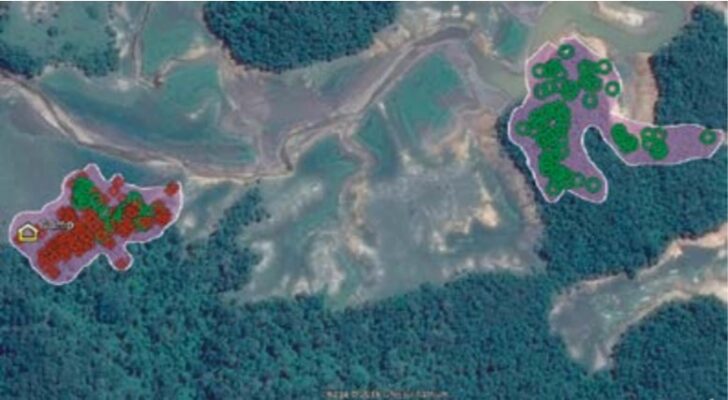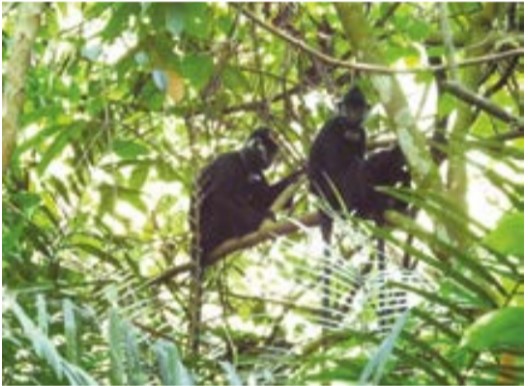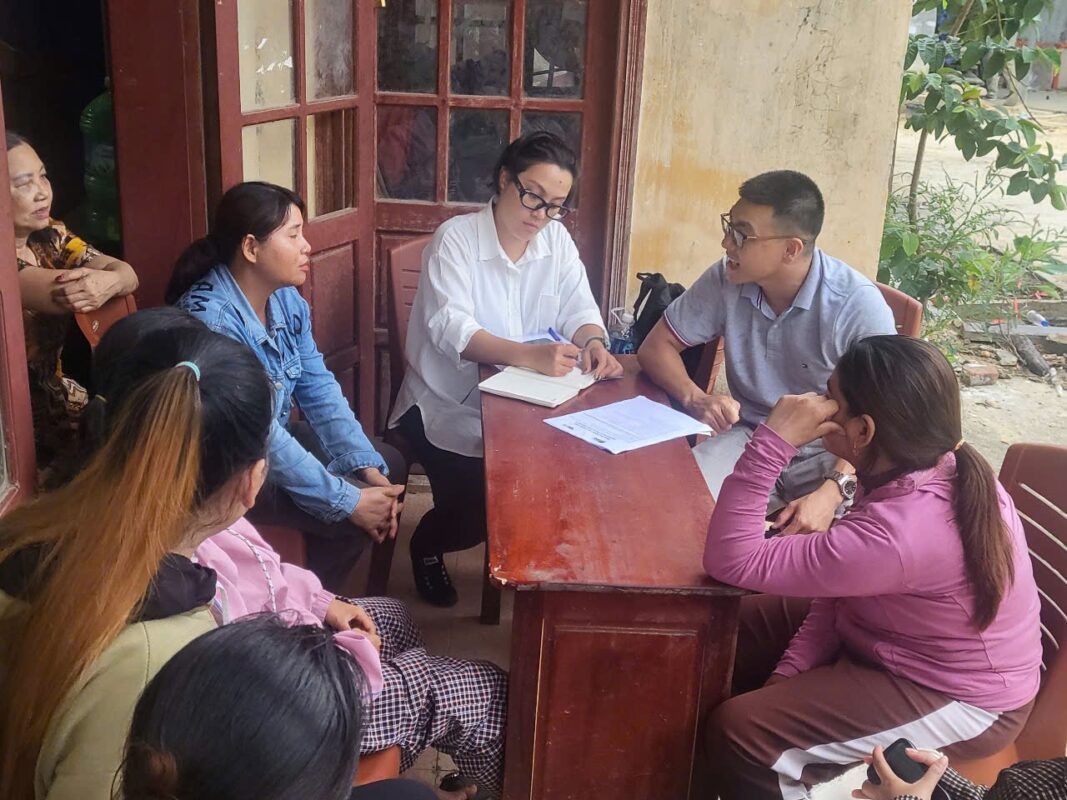Unexpected incidents during reintroduction of Hatinh langurs (Trachypithecus hatinhensis)
The Hatinh langur (Trachypithecus hatinhensis) is listed as an endangered species and occurs in a restricted area of central Vietnam and eastern Laos. The largest population in Vietnam lives in Phong Nha-Ke Bang National Park, Quang Binh Province. Several isolated smaller populations are dispersed along the border to Laos, but their long-term existence is precarious due to hunting pressure and habitat destruction.
The Endangered Primate Rescue Center (EPRC) maintains a very successful captive breeding program for the species and using this as a founder population it aims now to establish a larger second wild population in Vietnam. A number of surveys were carried out in areas, where smaller populations of Hatinh langurs were known to still exist, and in areas, where the species formerly occurred but has been eradicated. The aim was to locate an adequate area for the reintroduction of a new population. Finally Ke Go Nature Reserve in Hatinh Province was choosen.
In June 2015 a group of five captive born individuals from the EPRC – one adult male, two adult females each with a juvenile female offspring was transported to the nature reserve, where they were kept for one day in a temporary cage at the release site. The adult individuals were equipped with satellite radio collars. The monitoring of the animals started after release and coordinates were continously downloaded.

During the first month after release, the group established a home range using an area of approximately 9 ha. Over the second month the langur group gradually extended the home range and the travel distances increased.
Three months after release – in August 2015 – the langur group had a confrontation with an unusually large and aggressive rhesus macaque troop (Macaca mulatta). The macaques harassed the langurs for several days and the conflict finally split the langur group. The critical situation started end of August with another attack of the large macaque band and soon proofed critical for the released Hatinh langurs. One female died end of August soon after the attack, most probably due to stress caused by the continuous harassment which prevented normal foraging and rest time for digestion, a necessary sequence for this leaf eating primates. At the end of October the second adult female was found on the ground where she subsequently died. One of the juvenile females was found dead in the water of the lake with injuries in the face. We assume that the macaques caused the deaths of the animals. The second juvenile female was observed to travel alone but as she was without radio collar. Her movements could not be followed when she finally disappeared deeper into the forest. The decision was made to catch the remaining male and to return it to the EPRC.
Early in 2016 further surveys were conducted to locate another release site. A 35 ha peninsula at the Ke Go Lake was identified as potentially suitable. In July 2016 three captive born adult Hatinh langurs – one male and two females – were reintroduced at this site. Mid August, after one and a half months, all three individuals moved from the peninsula through a stretch of 100 m open grass land to the main area of the nature reserve. In October 2016 a century high flood in the area interrupted the monitoring for some time. The tracking and monitoring of the last released three individuals had to end unfortunately by the end December 2016, which was the end of the planned project period.

From the moment of the release from the temporary cage the reintroduced Hatinh langurs showed no difficulties in finding adequate food sources. The confrontation of the langurs with the macaques was very surprising. The occurrence of macaques in the nature reserve is known and was also confirmed during the preliminary surveys. In Indochina most langur species occur sympatrically with macaque species. The macaques are on joint sleeping places dominant, but such aggressive behaviour during daytime has to date not been observed. Probably the captive bred langurs lacked the experience and behavioural norms of a canny wild group; they showed no adequate reaction but displayed symptoms of extreme stress.
The final goal is the establishment of a second viable population of this endangered species in Vietnam. To reach this goal reintroduction of several groups with more than one or two females is necessary and hopefully within this project reintroduction will continue. It has to be considered how the released langurs can be better prepared for confrontations with macaques in the future. The release of a group not solely composed of captive bred individuals but with a wild born and experienced male is a possible solution.
The establishment of a new population is not only a logistic challenge it needs also long-term financial support. Reintroduction always requires a long-term financial and personal commitment.
See more here





